Brother 885-V32 User Manual
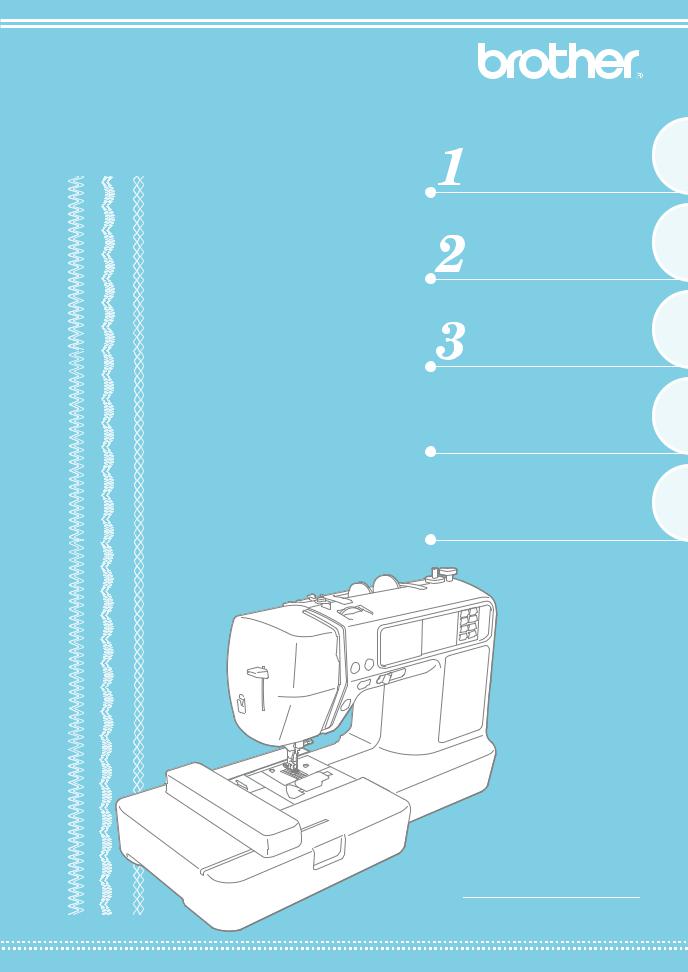
Computerized Embroidery and Sewing Machine
Operation Manual
Product Code 885-V31/V32/V33
GETTING READY
SEWING BASICS
UTILITY STITCHES
 EMBROIDERY
EMBROIDERY
 APPENDIX
APPENDIX
Please visit us at http://solutions.brother.com
where you can get product support and answers to
frequently asked questions (FAQs).

————————————————————————————————————————————————————
Introduction
Thank you for purchasing this embroidery and sewing machine. Before using this machine, carefully read the "Important Safety Instructions", and then study this manual for the correct operation of the various functions. In addition, after you have finished reading this manual, store it where it can quickly be accessed for future reference.
Important Safety Instructions
Please read these safety instructions before attempting to use the machine. This machine is intended for household use.
DANGER - To reduce the risk of electric shock
1Always unplug the machine from the electrical outlet immediately after using, when cleaning,
when making any user servicing adjustments mentioned in this manual, or if you are leaving the machine unattended.
WARNING - To reduce the risk of burns, fire, electric shock, or injury to persons.
2Always unplug the machine from the electrical outlet when removing covers, lubricating, or when making any adjustments mentioned in the instruction manual
•To unplug the machine, switch the machine to the symbol “O” position to turn it off, then grasp the plug and pull it out of the electrical outlet. Do not pull on the cord.
•Plug the machine directly into the electrical outlet. Do not use an extension cord.
•Always unplug your machine if the power is cut.
3 Never operate this machine if it has a damaged cord or plug, if it is not working properly, if it has
been dropped or damaged, or water is spilled on the unit. Return the machine to the nearest authorized dealer or service center for examination, repair, electrical or mechanical adjustment.
•While the machine is stored or in use if you notice anything unusual, such as an odor, heat, discoloration or deformation, stop using the machine immediately and unplug the power cord.
•When transporting the sewing machine, be sure to carry it by its handle. Lifting the sewing machine by any other part may damage the machine or result in the machine falling, which could cause injuries.
•When lifting the sewing machine, be careful not to make any sudden or careless movements, otherwise you may injure your back or knees.
4 Always keep your work area clear:
•Never operate the machine with any air openings blocked. Keep ventilation openings of the sewing machine and foot control free from the build up of lint, dust, and loose cloth.
•Do not store objects on the foot controller.
•Do not use extension cords. Plug the machine directly into the electrical outlet.
1

———————————————————————————————————————————————————
•Never drop or insert any object into any opening.
•Do not operate where aerosol (spray) products are being used or where oxygen is being administered.
•Do not use the machine near a heat source, such as a stove or iron; otherwise, the machine, power cord or garment being sewn may ignite, resulting in fire or an electric shock.
•Do not place this sewing machine on an unstable surface, such as an unsteady or slanted table, otherwise the sewing machine may fall, resulting in injuries.
5 Special care is required when sewing:
•Always pay close attention to the needle. Do not use bent or damaged needles.
•Keep fingers away from all moving parts. Special care is required around the machine needle.
•Switch the sewing machine to the symbol “O” position to turn it off when making any adjustments in the needle area.
•Do not use a damaged or incorrect needle plate, as it could cause the needle to break.
•Do not push or pull the fabric when sewing, and follow careful instruction when freehand stitching so that you do not deflect the needle and cause it to break.
6 This machine is not a toy:
•Your close attention is necessary when the machine is used by or near children.
•The plastic bag that this sewing machine was supplied in should be kept out of the reach of children or disposed of. Never allow children to play with the bag due to the danger of suffocation.
•Do not use outdoors.
7 For a longer service life:
•When storing this machine, avoid direct sunlight and high humidity locations. Do not use or store the machine near a space heater, iron, halogen lamp, or other hot objects.
•Use only neutral soaps or detergents to clean the case. Benzene, thinner, and scouring powders can damage the case and machine, and should never be used.
•Always consult the operation manual when replacing or installing any assemblies, the presser feet, needle, or other parts to assure correct installation.
8 For repair or adjustment:
•If the Light unit is damaged, it must be replaced by authorized dealer.
•In the event a malfunction occurs or adjustment is required, first follow the troubleshooting table in the back of the operation manual to inspect and adjust the machine yourself. If the problem persists, please consult your local authorized Brother dealer.
Use this machine only for its intended use as described in the manual.
Use accessories recommended by the manufacturer as contained in this manual.
Save these instructions.
The contents of this manual and specifications of this product are subject to change without notice. For additional product information and updates, visit our web site at www.brother.com
2

————————————————————————————————————————————————————
FOR USERS IN THE UK, EIRE, MALTA AND CYPRUS ONLY
IMPORTANT
•In the event of replacing the plug fuse, use a fuse approved by ASTA to BS 1362, i.e. carrying the mark, rating as marked on plug.
mark, rating as marked on plug.
•Always replace the fuse cover. Never use plugs with the fuse cover omitted.
•If the available electrical outlet is not suitable for the plug supplied with this equipment, you should contact your authorized dealer to obtain the correct lead.
FOR USERS IN AUSTRALIA AND NEW ZEALAND
This sewing machine is not intended to be used by young children, and assistance may be required if used by a person with a disability.
3
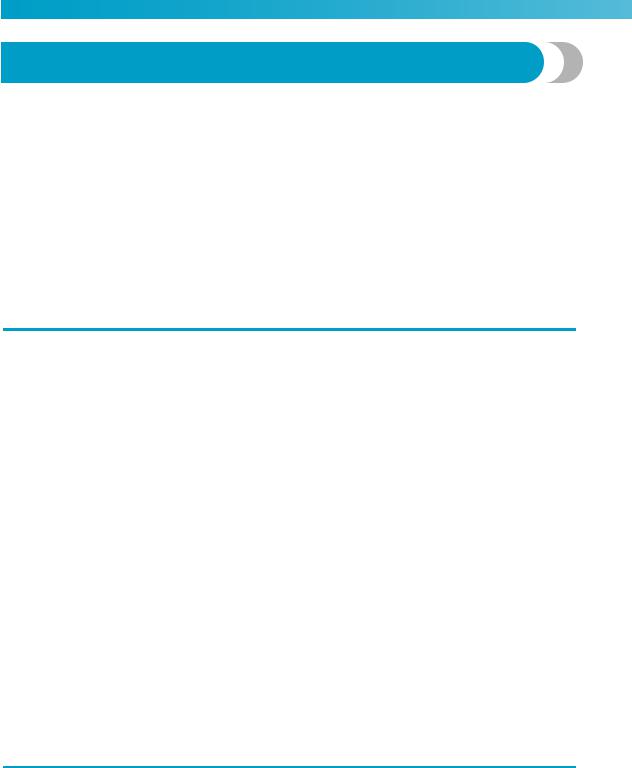
———————————————————————————————————————————————————
Contents |
|
Introduction ........................................................................................................................ |
1 |
Important Safety Instructions .............................................................................................. |
1 |
Machine Features ................................................................................................................ |
7 |
Accessories .......................................................................................................................... |
8 |
Included accessories ......................................................................................................................................... |
8 |
Optional accessories ......................................................................................................................................... |
9 |
Names of Machine Parts and Their Functions ................................................................... |
10 |
Front view....................................................................................................................................................... |
10 |
Needle and presser foot section ...................................................................................................................... |
11 |
Right-side/rear view ........................................................................................................................................ |
11 |
Operation buttons ........................................................................................................................................... |
12 |
Operation panel .............................................................................................................................................. |
13 |
GETTING READY |
15 |
Turning the Machine On/Off ............................................................................................. |
16 |
Power supply precautions ............................................................................................................................... |
16 |
Turning on the machine .................................................................................................................................. |
17 |
Turning off the machine .................................................................................................................................. |
17 |
LCD (Liquid Crystal Display) Operation............................................................................. |
18 |
Viewing the LCD ............................................................................................................................................. |
18 |
Changing the machine settings ........................................................................................................................ |
19 |
Checking machine operating procedures ........................................................................................................ |
21 |
Winding/Installing the Bobbin........................................................................................... |
22 |
Bobbin precautions ......................................................................................................................................... |
22 |
Winding the bobbin ........................................................................................................................................ |
22 |
Installing the bobbin ....................................................................................................................................... |
27 |
Upper Threading ............................................................................................................... |
31 |
About the spool of thread ................................................................................................................................ |
31 |
Threading the upper thread ............................................................................................................................. |
32 |
Using the twin needle ..................................................................................................................................... |
36 |
Replacing the Needle ........................................................................................................ |
39 |
Needle precautions ......................................................................................................................................... |
39 |
Selecting the needle depending on the thread and fabric types ...................................................................... |
39 |
Checking the needle ....................................................................................................................................... |
40 |
Replacing the needle ....................................................................................................................................... |
41 |
Replacing the Presser Foot ................................................................................................ |
43 |
Presser foot precautions .................................................................................................................................. |
43 |
Replacing the presser foot ............................................................................................................................... |
43 |
Removing and attaching the presser foot holder .............................................................................................. |
45 |
Sewing Cylindrical Pieces.................................................................................................. |
46 |
Free-arm sewing .............................................................................................................................................. |
46 |
SEWING BASICS |
47 |
Sewing............................................................................................................................... |
48 |
General sewing procedure .............................................................................................................................. |
48 |
Selecting stitching ........................................................................................................................................... |
49 |
Positioning the fabric ...................................................................................................................................... |
50 |
Starting to sew................................................................................................................................................. |
51 |
Securing the stitching ...................................................................................................................................... |
53 |
Cutting the thread ........................................................................................................................................... |
55 |
4

————————————————————————————————————————————————————
Setting the Stitch ............................................................................................................... |
57 |
Adjusting the stitch width ................................................................................................................................ |
57 |
Adjusting the stitch length ............................................................................................................................... |
59 |
Adjusting the thread tension ............................................................................................................................ |
59 |
Useful Functions................................................................................................................ |
61 |
Automatically sewing reverse/reinforcement stitches....................................................................................... |
61 |
Automatically cutting the thread ..................................................................................................................... |
62 |
Mirroring stitches ............................................................................................................................................ |
63 |
Saving stitch settings ....................................................................................................................................... |
64 |
Useful Sewing Tips ............................................................................................................ |
65 |
Trial sewing .................................................................................................................................................... |
65 |
Changing the sewing direction ........................................................................................................................ |
65 |
Sewing curves ................................................................................................................................................. |
65 |
Sewing thick fabrics ........................................................................................................................................ |
65 |
Sewing hook-and-loop fastener ....................................................................................................................... |
66 |
Sewing thin fabrics.......................................................................................................................................... |
66 |
Sewing stretch fabrics ...................................................................................................................................... |
67 |
Sewing an even seam allowance ..................................................................................................................... |
67 |
UTILITY STITCHES |
69 |
Stitch Setting Chart ........................................................................................................... |
70 |
Utility stitches ................................................................................................................................................. |
70 |
Overcasting Stitches.......................................................................................................... |
74 |
Sewing overcasting stitches using overcasting foot "G" .................................................................................... |
74 |
Sewing overcasting stitches using zigzag foot "J" ............................................................................................. |
75 |
Sewing overcasting stitches using the optional side cutter ............................................................................... |
76 |
Basic Stitching ................................................................................................................... |
78 |
Basting ............................................................................................................................................................ |
78 |
Basic stitching ................................................................................................................................................. |
78 |
Blind Hem Stitching .......................................................................................................... |
80 |
Buttonhole Stitching .......................................................................................................... |
83 |
Buttonhole sewing .......................................................................................................................................... |
84 |
Button sewing ................................................................................................................................................. |
88 |
Zipper Insertion ................................................................................................................. |
90 |
Inserting a centered zipper .............................................................................................................................. |
90 |
Inserting a side zipper ..................................................................................................................................... |
92 |
Sewing Stretch Fabrics and Elastic Tape ............................................................................. |
95 |
Stretch stitching ............................................................................................................................................... |
95 |
Elastic attaching .............................................................................................................................................. |
96 |
Appliqué, Patchwork and Quilt Stitching .......................................................................... |
97 |
Appliqué stitching ........................................................................................................................................... |
98 |
Patchwork (crazy quilt) stitching ..................................................................................................................... |
99 |
Piecing ............................................................................................................................................................ |
99 |
Quilting ........................................................................................................................................................ |
100 |
Free-motion quilting ...................................................................................................................................... |
102 |
Reinforcement Stitching .................................................................................................. |
103 |
Triple stretch stitching ................................................................................................................................... |
103 |
Bar tack stitching ........................................................................................................................................... |
103 |
Darning ......................................................................................................................................................... |
106 |
Eyelet Stitching ................................................................................................................ |
108 |
Decorative Stitching ........................................................................................................ |
109 |
Fagoting ........................................................................................................................................................ |
110 |
Scallop stitching ............................................................................................................................................ |
111 |
Smocking ...................................................................................................................................................... |
112 |
Shell tuck stitching ........................................................................................................................................ |
113 |
Joining .......................................................................................................................................................... |
114 |
5
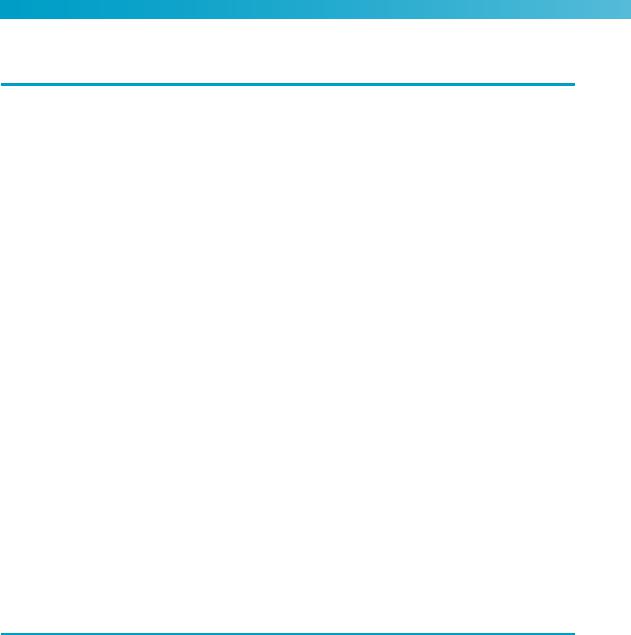
———————————————————————————————————————————————————
Heirloom stitching ........................................................................................................................................ |
114 |
EMBROIDERY |
117 |
Embroidering Neatly ....................................................................................................... |
118 |
What to prepare ............................................................................................................................................ |
118 |
Embroidery step by step ................................................................................................................................ |
119 |
Attaching the Embroidery Foot ....................................................................................... |
120 |
Attaching the embroidery foot ...................................................................................................................... |
120 |
Removing the embroidery foot ..................................................................................................................... |
122 |
Attaching the Embroidery Unit ........................................................................................ |
123 |
Embroidery unit precautions ......................................................................................................................... |
123 |
Attaching the embroidery unit ....................................................................................................................... |
123 |
Removing the embroidery unit ...................................................................................................................... |
125 |
Preparing the Fabric ........................................................................................................ |
126 |
Attaching a stabilizer material to the fabric ................................................................................................... |
126 |
Setting the fabric in the embroidery frame..................................................................................................... |
127 |
Attaching the Embroidery Frame ..................................................................................... |
130 |
Attaching the embroidery frame .................................................................................................................... |
130 |
Removing the embroidery frame ................................................................................................................... |
131 |
Selecting Embroidery Patterns ......................................................................................... |
132 |
Copyright information ................................................................................................................................... |
132 |
Embroidery pattern types ............................................................................................................................... |
132 |
LCD (liquid crystal display) operation ........................................................................................................... |
133 |
Selecting alphabet characters ........................................................................................................................ |
136 |
Selecting an embroidery pattern .................................................................................................................... |
137 |
Selecting a frame pattern............................................................................................................................... |
137 |
Using an embroidery card ............................................................................................................................. |
138 |
Embroidering................................................................................................................... |
139 |
Embroidering a pattern .................................................................................................................................. |
139 |
Appliquéing ................................................................................................................................................. |
141 |
Editing and Saving Patterns ............................................................................................. |
143 |
Adjusting the layout and the size................................................................................................................... |
143 |
Adjusting the thread tension .......................................................................................................................... |
145 |
Connecting character patterns....................................................................................................................... |
146 |
Resewing ...................................................................................................................................................... |
147 |
Thread runs out partway through a design..................................................................................................... |
148 |
Stopping while embroidering ........................................................................................................................ |
148 |
Saving patterns.............................................................................................................................................. |
150 |
APPENDIX |
151 |
Care and Maintenance .................................................................................................... |
152 |
Cleaning the machine surface ....................................................................................................................... |
152 |
Cleaning the race .......................................................................................................................................... |
152 |
Troubleshooting .............................................................................................................. |
154 |
Error messages .............................................................................................................................................. |
159 |
Adjusting the LCD ......................................................................................................................................... |
163 |
Operation beep............................................................................................................................................. |
163 |
Index ............................................................................................................................... |
165 |
6
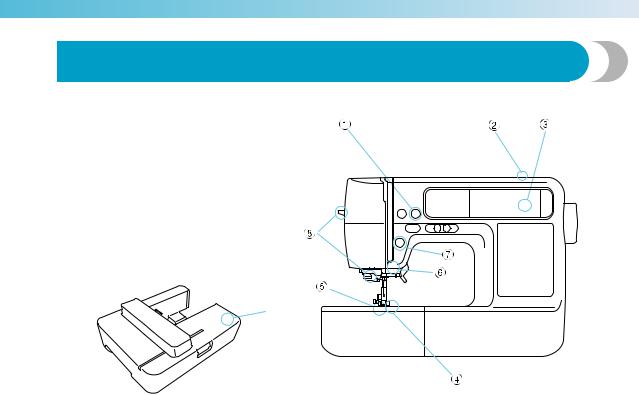
————————————————————————————————————————————————————
Machine Features
9
aAutomatic thread cutting
The thread can be cut automatically after sewing (page 55, 62).
bFast bobbin winding system
With the fast and simple bobbin winder, you can wind bobbins with one press of a button (page 22).
cBuilt-in stitches
You can select from the built-in utility stitches available (page 70).
dSeven-point feed dogs
Ensure smooth, even feeding of multiple fabric layers and a variety of fabric weights (page 11).
eQuick-set bobbin
You can start sewing without pulling up the bobbin thread (page 27).
fBright light
The convenient LED lamp makes it easy to work on dark fabrics.
gLighting Start/Stop button
When the green light is on, the machine is ready to sew. A red or orange light indicates an error or that the machine is warming up (page 12).
hEasy-to-use needle threader
You can thread the needle easily by one press of a lever (page 32).
iEmbroidery
You can embroider built-in embroidery patterns, characters, framed decorations, and designs from optional embroidery cards (page 117).
7
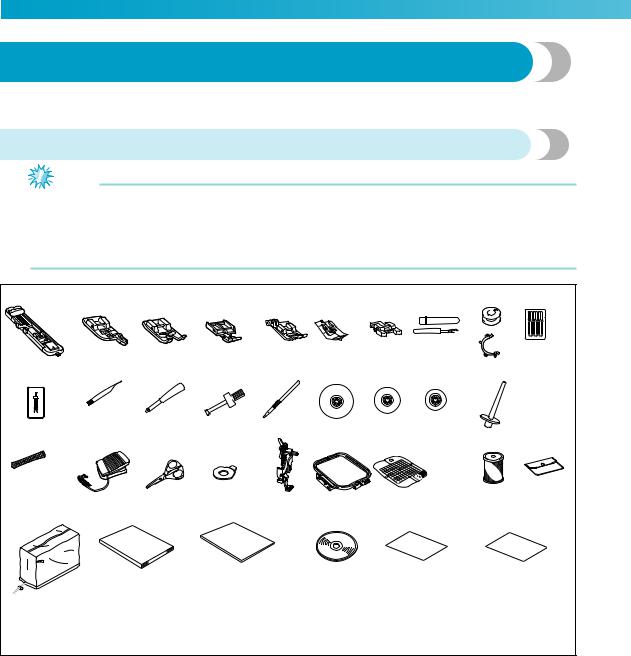
———————————————————————————————————————————————————
Accessories
After opening the box, check that the following accessories are included. If any item is missing or damaged, contact your dealer.
Included accessories
Note
Foot controller: Model T
This foot controller can be used on the machine with product code 885-V31/V32/V33.The product code is mentioned on the machine rating plate.
The securing screw on the side of the presser foot holder is available through your authorized dealer. (Part code: 132730-122)
1. |
2. |
3. |
4. |
5. |
6. |
7. |
8. |
9. |
10.*1 |
|
|
|
|
|
|
|
|
|
|
|
|
|
|
|
|
|
|
|
|
|
|
|
|
|
|
|
|
|
|
|
|
|
|
11. |
12. |
13. |
14. |
15. |
16. |
17. |
18. |
19. |
|
|
|
|
|
|
|
|
|
|
|
|
|
|
|
|
|
|
|
|
|
20. |
21. |
22. |
23. |
24. |
25. |
26. |
27.*2 |
28.*2 |
29. |
30. |
31.*2 |
32. |
33. |
*1 75/11 2 needles 90/14 2 needles
90/14 2 needles: Ball point needle (gold colored) *2 Not included depending on the model.
8
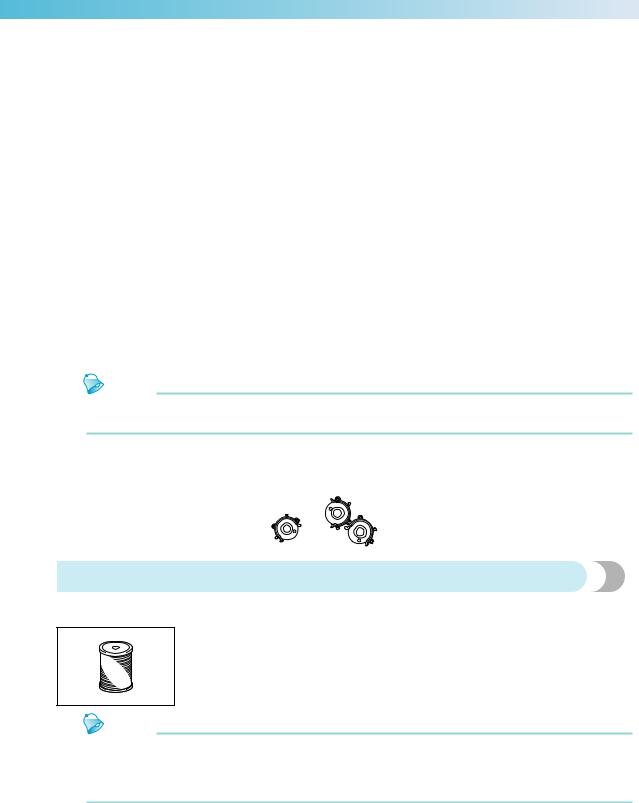
————————————————————————————————————————————————————
No. |
Part Name |
Part Code |
No. |
Part Name |
Part Code |
|||
U.S.A. / Canada |
Others |
U.S.A. / Canada |
Others |
|||||
|
|
|
|
|||||
1 |
Buttonhole foot "A" |
XC2691 |
-023 |
18 |
Spool cap (small) |
130013-124 |
||
2 |
Overcasting foot "G" |
XC3098-051 |
19 |
Extra spool pin |
XE2241-001 |
|||
3 |
Monogramming foot "N" |
XD0810-031 |
20 |
Spool net |
XA5523-020 |
|||
4 |
Zipper foot "I" |
X59370-021 |
21 |
Foot controller |
XD0501-021(EU area) |
|||
XC8816-021(other areas) |
||||||||
|
|
|
|
|
|
|||
5 |
Zigzag foot "J" (on machine) |
XC3021-031 |
22 |
Scissors |
XC1807-121 |
|||
6 |
Blind stitch foot "R" |
XC4051-031 |
23 |
Disc-shaped screwdriver |
XC1074-051 |
|||
7 |
Button fitting foot "M" |
XE2137-001 |
24 |
Embroidery foot "Q" |
XD0474-151 |
|||
8 |
Seam ripper |
X54243-051 |
25 |
Embroidery set (medium) |
|
EF62: |
||
H 10 cm X W 10 cm |
SA432 |
|||||||
XA6628-102 |
||||||||
|
|
|
|
|
(H 4 inches X W 4 inches) |
|
||
|
|
|
|
|
|
|
||
|
Bobbin (4) |
SA156 |
SFB: |
26 |
Embroidery bobbin thread |
XC6283-001 |
||
9 |
XA5539-151 |
(white) |
||||||
|
Bobbin clip (3) |
XE3060 |
-001 |
27 |
Accessory bag |
XC4487-021 |
||
10 |
Needle set |
XE58358-021 |
28 |
Soft cover |
XC4842-022 |
|||
11 |
Twin needle |
X59296-121 |
29 |
Operation manual |
XE3116-201 |
|||
12 |
Cleaning brush |
X59476-021 |
30 |
Quick reference guide |
XE3118-001 |
|||
13 |
Eyelet punch |
135793-001 |
31 |
CD |
XE3365-101(SE-350, LB-6770) |
|||
XE7728-001(others) |
||||||||
|
|
|
|
|
|
|||
14 |
Screwdriver |
XC4237-021 |
32 |
Language setting sheet |
XE3124-001 |
|||
15 |
Touch pen |
XE3069-001 |
33 |
Felt with stabilizer |
182986-024 |
|||
16 |
Spool cap (large) |
130012-024 |
|
|
|
|
||
17 |
Spool cap (medium) (on |
XE1372-001 |
|
|
|
|
||
|
machine) |
|
|
|
|
|
|
|
Memo
All specifications are correct at the time of printing. The part codes are subject to change without notice.
■Bobbin clip
Use the bobbin clip to prevent the end of the thread wound onto the bobbin from loosening.
The bobbin clips can be connected each other.
Optional accessories
The following are available as optional accessories.
Part Name |
Part Code |
||
U.S.A. / Canada |
Others |
||
|
|||
Embroidery bobbin |
SAEBT |
EBT-CEN |
|
thread (white) |
X81164-001 |
||
|
|||
Embroidery bobbin |
SAEBT999 |
EBT-CEBN |
|
thread (black) |
XC5520-001 |
||
|
|||
Memo
To obtain optional accessories or parts, visit [http://www.brother.com/], or [http://www.brothermall.com] (in USA).
Visit your nearest authorized dealer for a complete listing of optional accessories available for your machine.
9
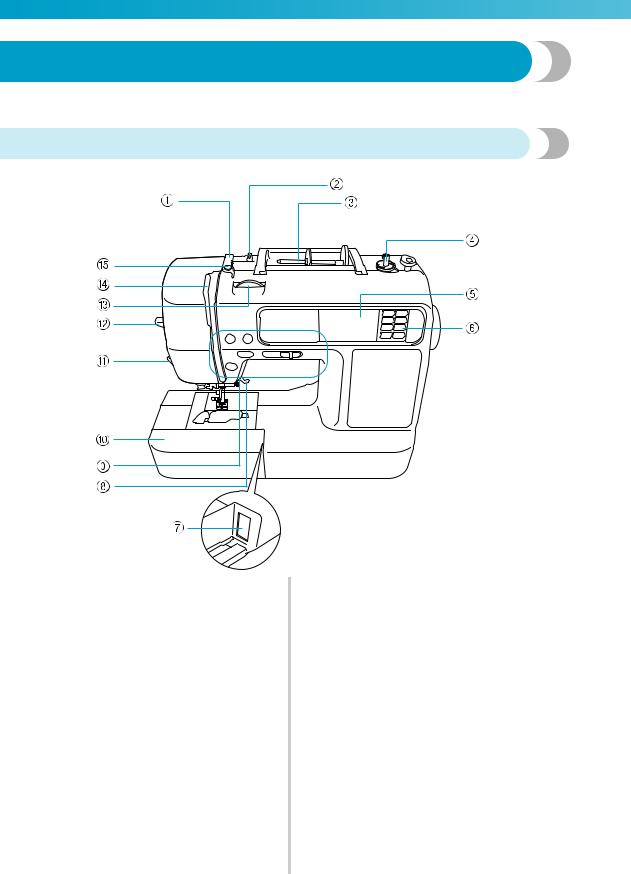
———————————————————————————————————————————————————
Names of Machine Parts and Their Functions
The names of the various parts of the sewing machine and their functions are described below. Before using the sewing machine, carefully read these descriptions to learn the names of the machine parts.
Front view
aThread guide cover (page 24, 33)
Pass the thread under this thread guide cover when winding the bobbin thread and threading the machine.
bThread guide (page 24, 33)
Pass the thread under this thread guide when winding the bobbin thread and threading the machine.
cSpool pin (page 23, 32)
Place a spool of thread on the spool pin.
dBobbin winder (page 22)
Use the bobbin winder when winding the bobbin.
eLCD (liquid crystal display) (touch panel) (page 18) Setting for the selected stitch or pattern and error messages appear in the LCD.
fOperation panel (page 13)
Use the keys on this panel to select stitches or embroidery patterns, or check how to use the sewing machine, etc.
gEmbroidery unit connector slot (page 123) Plug in the connector for the embroidery unit.
hPresser foot lever (page 50)
Raise and lower the presser foot lever to raise and lower the presser foot .
iOperation buttons (page 12)
Use these buttons to operate the machine.
jFlat bed attachment (page 46)
Remove the flat bed attachment when sewing cylindrical pieces such as sleeve cuffs.
kThread cutter (page 56)
Pass the threads through the thread cutter to cut them.
lNeedle threader lever (page 35)
Use the needle threader lever to thread the needle.
mThread tension dial (page 59, 145)
Adjust the upper thread tension with this dial.
nThread take-up lever (page 34)
oBobbin-winding thread guide and pretension disc (page 24)
Pass the thread under this thread guide and around the pretension disc when winding the bobbin thread.
10
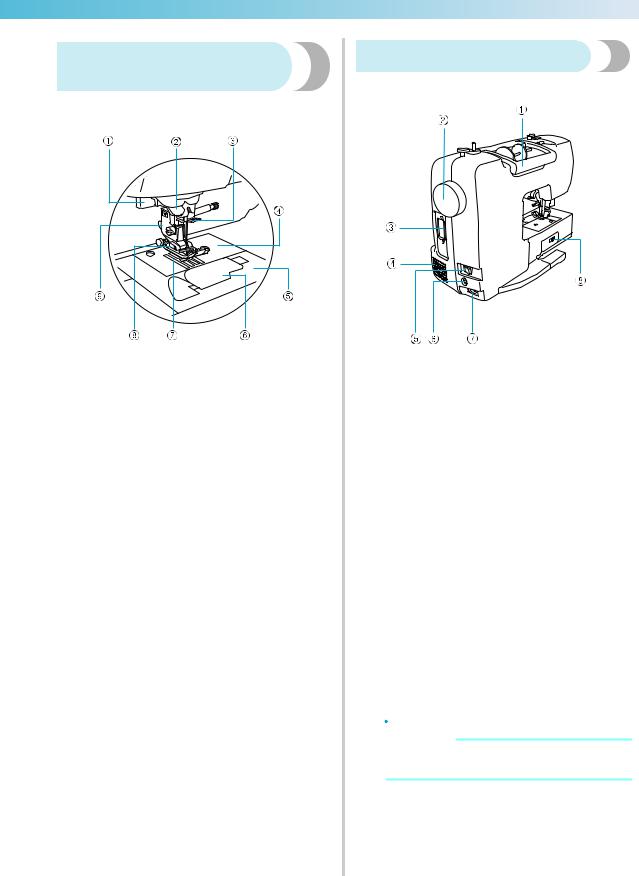
————————————————————————————————————————————————————
Needle and presser foot section
aButtonhole lever (page 86)
Lower the buttonhole lever when sewing buttonholes and bar tacks.
bThread guide disk (page 34)
Pass the thread through the thread guide disk when using the needle threader to thread the needle.
cNeedle bar thread guide (page 34)
Pass the upper thread through the needle bar thread guide.
dNeedle plate (page 67)
The needle plate is marked with guides for sewing straight seams.
eNeedle plate cover (page 152)
Remove the needle plate cover to clean the bobbin case and race.
fBobbin cover/bobbin case (page 28)
Remove the bobbin cover, and then insert the bobbin into the bobbin case.
gFeed dogs (page 88)
The feed dogs feed the fabric in the sewing direction.
hPresser foot (page 43, 50)
The presser foot applies pressure consistently on the fabric as the sewing takes place. Attach the appropriate presser foot for the selected stitching.
iPresser foot holder (page 45)
The presser foot is installed onto the presser foot holder.
Right-side/rear view
aHandle
Carry the sewing machine by its handle when transporting the machine.
bHandwheel (page 50)
Turn the handwheel toward you (counterclockwise) to raise and lower the needle to sew one stitch.
cEmbroidery card slot (page 138)
Insert the embroidery card.
dAir vent
The air vent allows the air surrounding the motor to be exchanged. Do not cover the air vent while the sewing machine is being used.
eMain power switch (page 17)
Use the main power switch to turn the sewing machine on and off.
fFoot controller jack (page 52)
Insert the plug on the end of the foot controller cable into the foot controller jack.
gPower supply jack (page 17)
Insert the plug on the power supply cord into the power supply jack.
hDrop feed lever (page 88)
Use the drop feed lever to lower the feed dogs.
 Memo
Memo
zRefer to pages 10 through 13 while you are learning to use your machine.
11
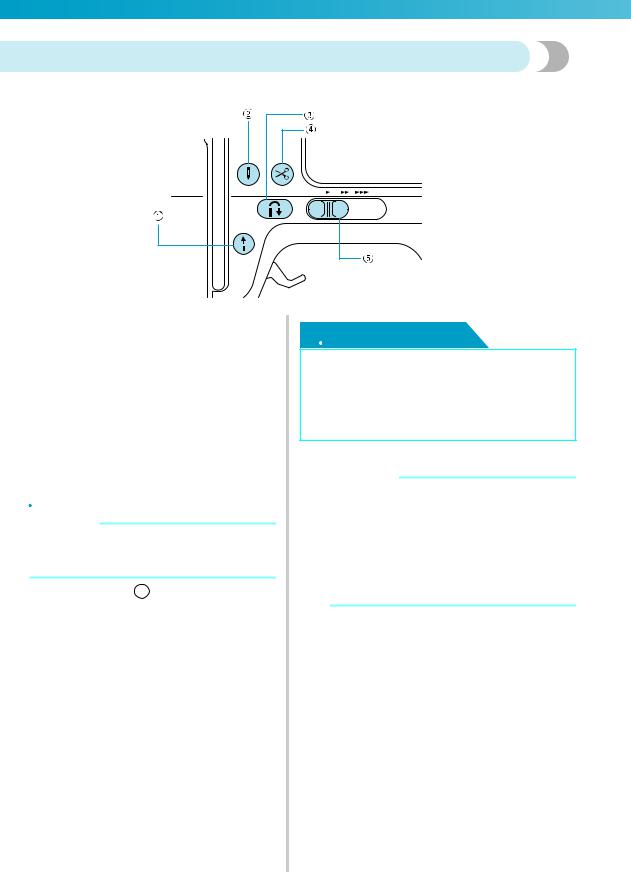
———————————————————————————————————————————————————
Operation buttons
The operation buttons help you to easily perform various basic sewing machine operations.
aStart/stop button 
Press the start/stop button to start or stop sewing. The machine sews at a slow speed at the beginning of sewing while the button is pressed. When sewing is stopped, the needle is lowered in the fabric. For details, refer to "Starting to sew" (page 51).
The button changes color according to the machine’s operation mode.
Green: |
The machine is ready to sew or is |
|
sewing. |
Red: |
The machine can not sew. |
Orange: |
The machine is winding the bobbin |
|
thread, or the bobbin winder shaft is |
|
moved to the right side. |
 Memo
Memo
zWhen the foot controller is plugged in,
 (Start/stop button) cannot be used to
(Start/stop button) cannot be used to
start or stop sewing.
bNeedle position button 
Press the needle position button to raise or lower the needle. Be sure to raise the needle before threading the needle. Use this button to change the sewing direction or for detailed sewing in small areas. Pressing the button twice sews one stitch.
cReverse/reinforcement stitch button 
Press the reverse/reinforcement stitch button to sew reverse stitches or reinforcement stitches. Reverse stitches are sewn by keeping the button pressed down to sew in the opposite direction. Reinforcement stitches are sewn by sewing 3 to 5 stitches on top of each other. For details, refer to "Securing the stitching" (page 53).
dThread cutter button 
Press the thread cutter button after sewing is stopped to cut both the upper and the bobbin threads. For details, refer to "Cutting the thread" (page 55).
 CAUTION
CAUTION
●Do not press the thread cutter button after the threads have already been cut, otherwise the needle may break, the threads may become tangled or damage to the machine may occur.
 Note
Note
zDo not press the thread cutter button if there is no fabric under the presser foot or while the machine is sewing, otherwise damage to the machine may occur.
zWhen cutting nylon thread or other special threads, use the thread cutter on the side of the machine. For details, refer to "Using the thread cutter" (page 56).
eSewing speed controller 
Slide the sewing speed controller to adjust the sewing speed.
12
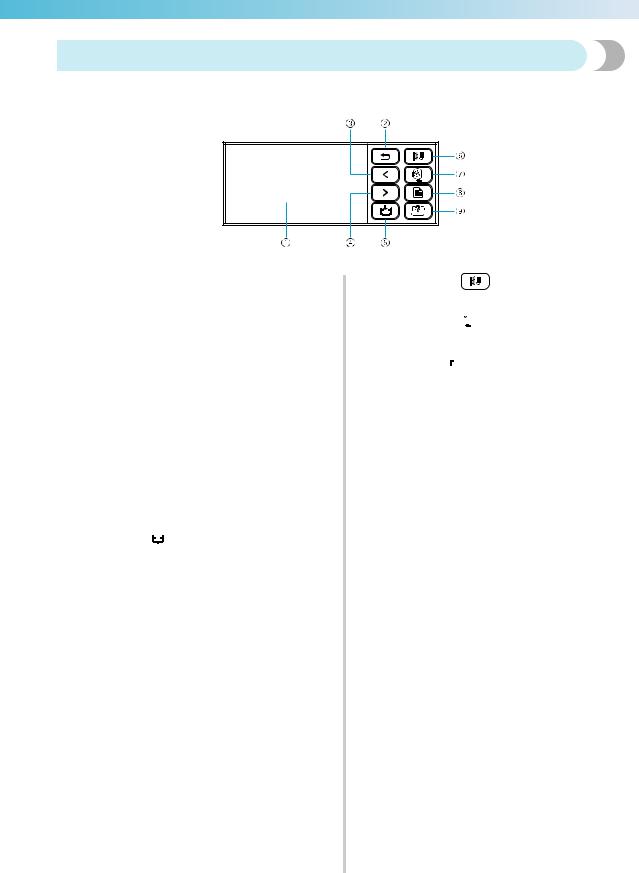
————————————————————————————————————————————————————
Operation panel
The front operation panel has an LCD (liquid crystal display) and operation keys.
aLCD (liquid crystal display) (touch panel)
Setting for the selected stitch or pattern and error messages appear in the LCD.
Touch the keys displayed on the LCD with your finger or the touch pen to perform operations.
For details, refer to "LCD (Liquid Crystal Display) Operation" (page 18).
bBack key 
Press to return to the previous screen.
cPrevious page key 
Displays the previous page when there are items that are not displayed on the LCD.
dNext page key 
Displays the next page when there are items that are not displayed on the LCD.
eMemory key 
Press to enter alphabet character embroidery or embroidery patterns you have edited or adjusted, etc. into the sewing machine memory.
f Utility stitch key
Press this key to select a utility stitch.
gEmbroidery key 
Press this key to sew embroidery.
hSettings key 
Press to set the needle stop position, the buzzer sound, and more.
iSewing machine help key 
Press to get help on using the sewing machine. Displays simple explanations of setting upper thread / bobbin winding / setting bobbin thread / needle replacement / embroidery unit attachment / embroidery frame attachment / embroidery foot attachment / presser foot replacement.
13

———————————————————————————————————————————————————
14

1 |
GETTING READY |
|
|
The various preparations required before starting to sew are described in this chapter. |
|
|
Turning the Machine On/Off .................................................................................. |
16 |
|
LCD (Liquid Crystal Display) Operation.................................................................. |
18 |
|
Winding/Installing the Bobbin................................................................................. |
22 |
|
Upper Threading ..................................................................................................... |
31 |
|
Replacing the Needle .............................................................................................. |
39 |
|
Replacing the Presser Foot ...................................................................................... |
43 |
|
Sewing Cylindrical Pieces........................................................................................ |
46 |
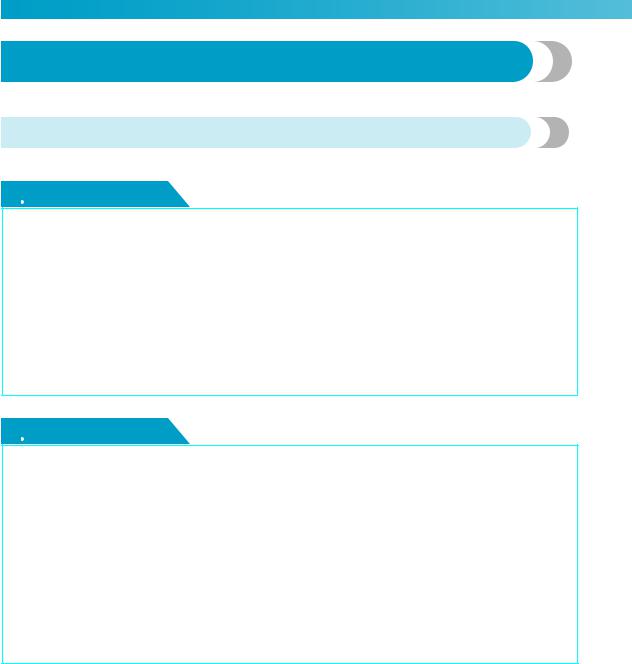
GETTING READY ————————————————————————————————————————————
Turning the Machine On/Off
This section explains how to turn the sewing machine on and off.
Power supply precautions
Be sure to observe the following precautions concerning the power supply.
 WARNING
WARNING
●Use only regular household electricity for the power source. Using other power sources may result in fire, electric shock, or damage to the machine.
●Make sure that the plugs on the power cord are firmly inserted into the electrical outlet and the power supply jack on the machine.
●Do not insert the plug on the power cord into an electrical outlet that is in poor condition.
●Turn off the main power and remove the plug in the following circumstances:
•When you are away from the machine
•After using the machine
•When the power fails during use
•When the machine does not operate correctly due to a bad connection or a disconnection
•During electrical storms
 CAUTION
CAUTION
●Use only the power cord included with this machine.
●Do not use extension cords or multi-plug adapters with many other appliances plugged in to them. Fire or electric shock may result.
●Do not touch the plug with wet hands. Electric shock may result.
●When unplugging the machine, always turn off the main power first. Always grasp the plug to remove it from the outlet. Pulling on the cord may damage the cord, or lead to fire or electric shock.
●Do not allow the power cord to be cut, damaged, modified, forcefully bent, pulled, twisted, or bundled. Do not place heavy objects on the cord. Do not subject the cord to heat. These things may damage the cord and cause fire or electric shock. If the cord or plug is damaged, take the machine to your authorized dealer for repairs before continuing use.
●Unplug the power cord if the machine is not to be used for a long period of time. Otherwise a fire may result.
16
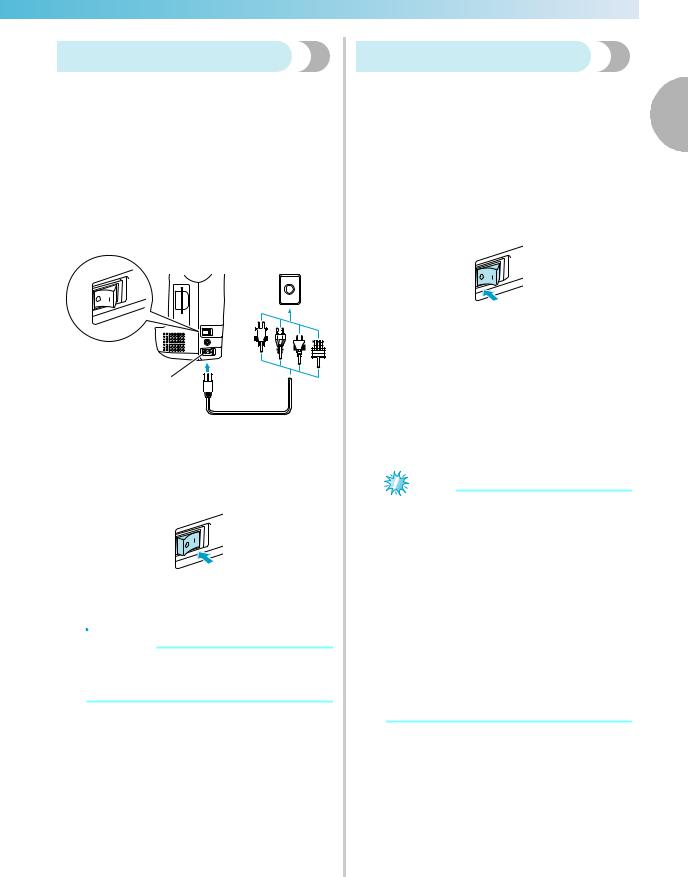
————————————————————————————————————————————————————
Turning on the machine
Prepare the included power cord.
aMake sure that the sewing machine is turned off (the main power switch is set to " "), and then plug the power supply cord into the power supply jack on the right side of the machine.
"), and then plug the power supply cord into the power supply jack on the right side of the machine.
bInsert the plug of the power supply cord into a house hold electrical outlet.
1
a Power supply jack
cPress the right side of the main power switch on the right side of the machine to turn the machine on (set it to "|").
XThe light, LCD and  (Start/stop button) light up when the machine is turned on.
(Start/stop button) light up when the machine is turned on.
 Memo
Memo
zWhen the machine is turned on, the needle and the feed dogs will make sound when they move; this is not a malfunction.
Turning off the machine
When you have finished using the sewing machine, turn it off. In addition, before transporting the sewing
machine to another location, be sure to turn it off. |
1 |
|
aMake sure that the machine is not sewing.
bPress the left side of the main power switch on the right side of the machine to turn the machine off (set it to " ").
").
XThe light, LCD and  (Start/stop button) go off when the machine is turned off.
(Start/stop button) go off when the machine is turned off.
cUnplug the power supply cord from the electrical outlet.
Grasp the plug when unplugging the power supply cord.
dUnplugjack. the power cord from the power supply
Note
zIf a power outage occurs while the sewing machine is being operated, turn off the sewing machine and unplug the power supply cord. When restarting the sewing machine, follow the necessary procedure to correctly operate the machine.
(For U.S.A. only)
zThis appliance has a polarized plug (one blade wider than the other). To reduce the risk of electrical shock, this plug is intended to fit in a polarized outlet only one way. If the plug does not fit fully in the outlet, reverse the plug. If it still does not fit, contact a qualified electrician to install the proper outlet. Do not modify the plug in any way.
Turning the Machine On/Off 17
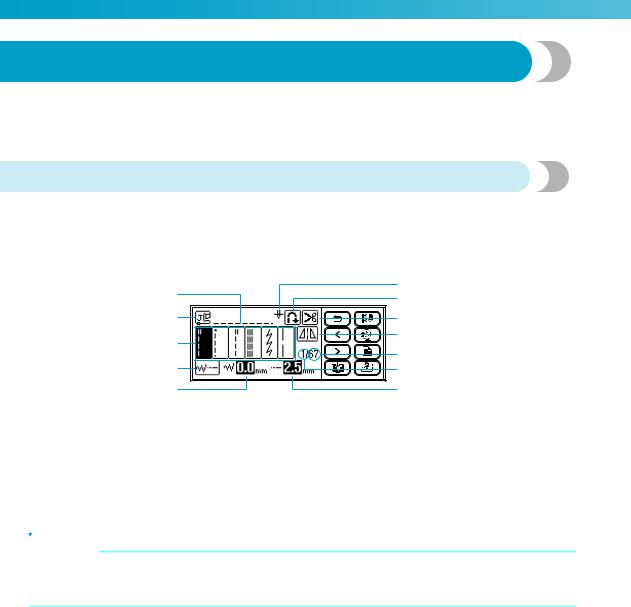
GETTING READY ————————————————————————————————————————————
LCD (Liquid Crystal Display) Operation
Selected stitch, pattern settings and messages are displayed on the LCD (liquid crystal display) on the front of the sewing machine. Change the screen on the LCD using the keys on the right side of the LCD, and make operations by directly touching the icons with your finger or a touch pen. For details, refer to "Operation panel" (page 13).
Viewing the LCD
When the power is turned on, the LCD comes on. When you touch the LCD screen according to the message displayed on the screen with your finger or a touch pen, the following utility stitch selection screen is displayed.
1 |
l |
|
k |
||
|
||
2 |
0 |
|
3 |
9 |
|
|
||
|
8 |
|
4 |
7 |
|
5 |
6 |
aSelected stitch
bPresser foot to be used
cStitches
dStitch settings and twin needle sewing
eStitch width
fStitch length
gNumber of the selected stitch
hNumber of stitches contained
iHorizontal mirror image
jAutomatic thread cutting
kAutomatic reverse/reinforcement
lSingle/twin needle sewing and needle stop position
 Memo
Memo
zA different screen is displayed when the embroidery unit is attached. The details are explained in "Selecting an embroidery pattern" (page 137).
zRefer to "Error messages" (page 159) for messages displayed on the LCD.
18
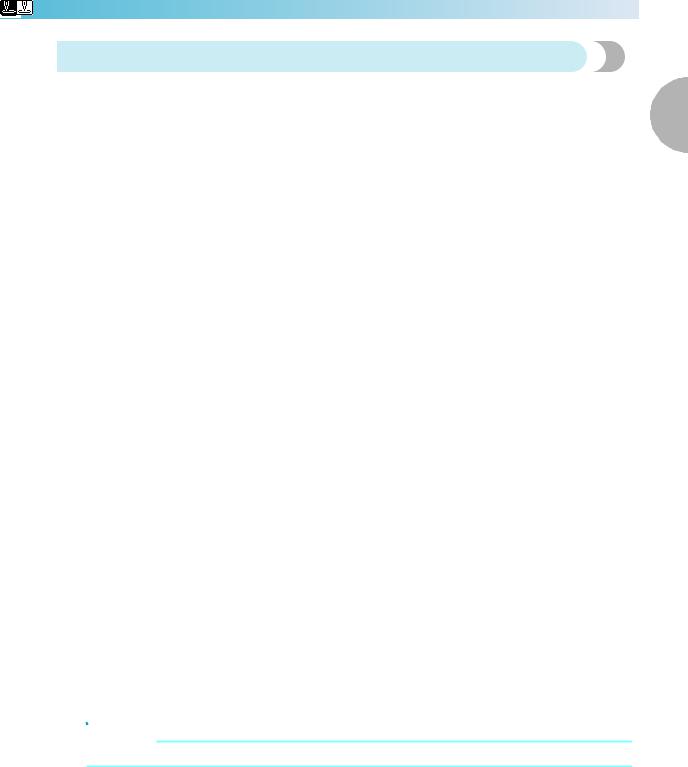
————————————————————————————————————————————————————
Changing the machine settings
Various sewing machine operations and sewing settings can be changed. |
|
|
|
||
The stitch or machine attributes that can be set are listed below. For details on operation, refer to the next |
|||||
page. |
|
|
|
1 |
|
|
|
|
|
|
|
Attribute |
Icon |
Details |
Settings |
|
|
|
|
|
|
|
|
Needle position |
|
Specifies where the needle is positioned when |
Down |
Up |
|
|
the sewing machine is stopped. |
|
|||
|
|
|
|
|
|
|
|
|
|
|
|
Stitch width |
|
Allows the stitch width to be adjusted with the |
|
|
|
control |
|
sewing speed controller (page 58). |
|
|
|
|
|
|
|
|
|
|
|
Changes the thread color display on the |
Thread color/Time to |
|
|
|
|
embroider/Needle count/ |
|
||
|
|
embroidery screen (page 133). |
|
||
Thread color |
|
Thread number (#123) |
|
||
|
|
|
|||
|
|
|
|
|
|
display |
|
|
Embroidery/Country/Madeira |
|
|
|
|
|
|
||
|
|
(When "Thread No.#123" is selected) |
poly/Madeira rayon/Sulky/ |
|
|
|
|
|
Robison Anton |
|
|
|
|
|
|
|
|
Display unit |
|
Selects the measurement units that are |
mm/INCH |
|
|
|
displayed (only for embroidering) (page 134). |
|
|||
|
|
|
|
|
|
|
|
|
|
|
|
Buzzer |
|
Specifies whether or not a beep is sounded with |
|
|
|
|
each operation (page 163). |
|
|
|
|
|
|
|
|
|
|
|
|
|
|
|
|
|
|
Selects whether "1 Straight stitch (left)" or |
|
|
|
Initial needle |
|
"3 Straight stitch (middle)" that is |
|
|
|
position |
|
|
|
|
|
|
|
automatically selected when the machine is |
|
|
|
|
|
turned on. |
|
|
|
|
|
|
|
|
|
|
|
|
English/German/French/ |
|
|
|
|
Allows the language used in the screens to be |
Italian/Dutch/Spanish/ |
|
|
Language |
|
Japanese/Danish/Norwegian/ |
|
||
|
changed. |
|
|||
|
|
Finnish/Swedish/Portuguese/ |
|
||
|
|
|
|
||
|
|
|
Russian/Korean/Thai/others |
|
|
|
|
|
|
|
|
LCD brightness |
|
Adjust the brightness of the LCD (page 163). |
Lighter |
Darker |
|
|
|
|
|
|
|
Product number |
NO.: |
The "NO." is the number for the embroidery and |
|
- |
|
sewing machine. |
|
|
|||
|
|
|
|
|
|
|
|
|
|
|
|
Program version |
Version: |
Display the program version. |
|
- |
|
|
|
|
|
|
|
 Memo
Memo
z The item shown in reverse highlighting are the settings at the time of purchase.
LCD (Liquid Crystal Display) Operation 19
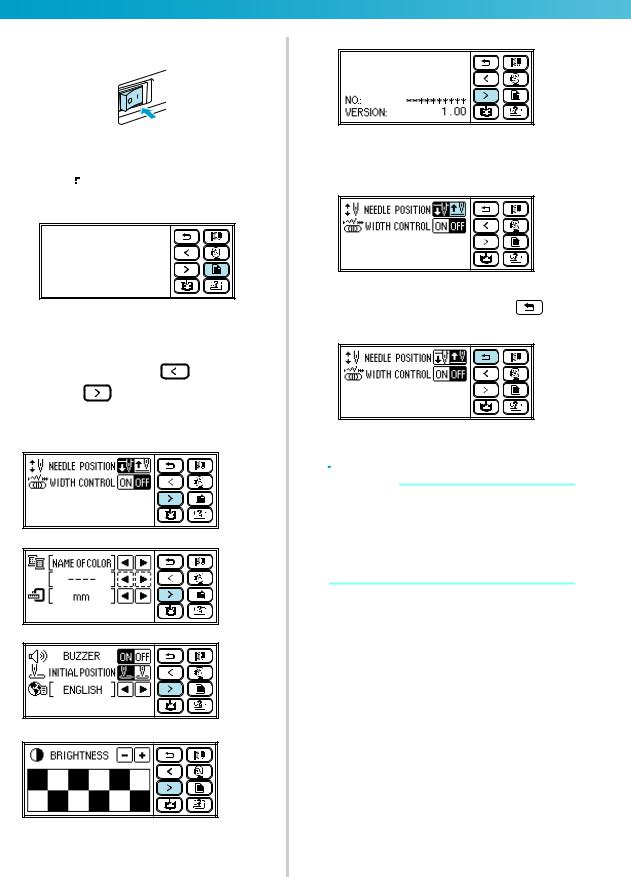
GETTING READY ————————————————————————————————————————————
aTurn on the sewing machine.
X The LCD comes on.
Example: Changing the needle stop position
bPresspanel. (Settings key) on the display
(Settings key) on the display
|
When settings are complete, press |
X The setting screen appears. |
d(Back key). |
cPress the item to be set. |
(Previous page |
|
Switch the screen using |
||
key) and |
(Next page key). |
|
• The following screens show their default |
||
settings. |
|
X The initial stitch screen appears again. |
|
|
|
 Memo
Memo
z "NO" is the individual number for the sewing machine.
z "VERSION" is the program version which is installed in the sewing machine.
z Settings that are changed are saved even if the power is turned off.
20
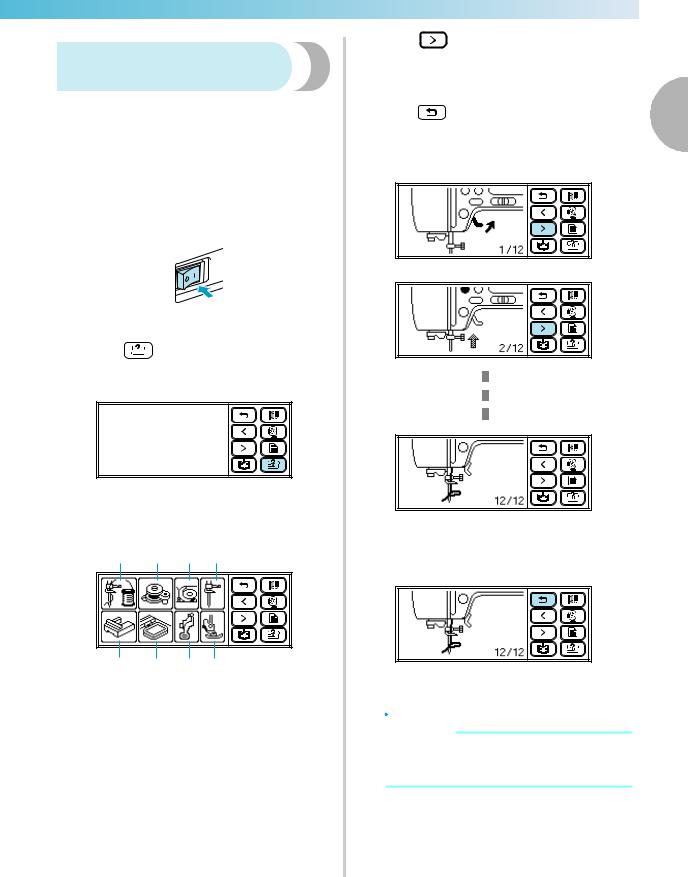
————————————————————————————————————————————————————
Checking machine operating procedures
Simple explanations can be referred on the LCD display for the following items.
Displays simple explanations of setting upper thread / bobbin winding / setting bobbin thread / needle replacement / embroidery unit attachment / embroidery frame attachment / embroidery foot attachment / presser foot replacement on the LCD.
aTurn on the sewing machine.
X The LCD comes on.
bPress  (Sewing machine help key) on the display panel.
(Sewing machine help key) on the display panel.
X The sewing machine help screen appears.
cPress the item to be displayed. a b c d
h g f e
aUpper threading
bBobbin winding
cBobbin installation
dNeedle replacement
ePresser foot replacement
fEmbroidery foot attachment
gEmbroidery frame attachment
hEmbroidery unit attachment
XThe first screen describing the procedure for the selected topic appears.
dPressnext page. (Next page key) to switch to the
If you press  (Previous page key), you return to the previous page.
(Previous page key), you return to the previous page.
Press |
(Back key) to return to the item |
1 |
|
selection screen.
Example: Upper threading
eAfter you finish viewing, press  (Back key) two times.
(Back key) two times.
X The initial stitch screen appears again.
 Memo
Memo
zFor details on each topic, refer to the corresponding page in this Operation Manual.
LCD (Liquid Crystal Display) Operation 21
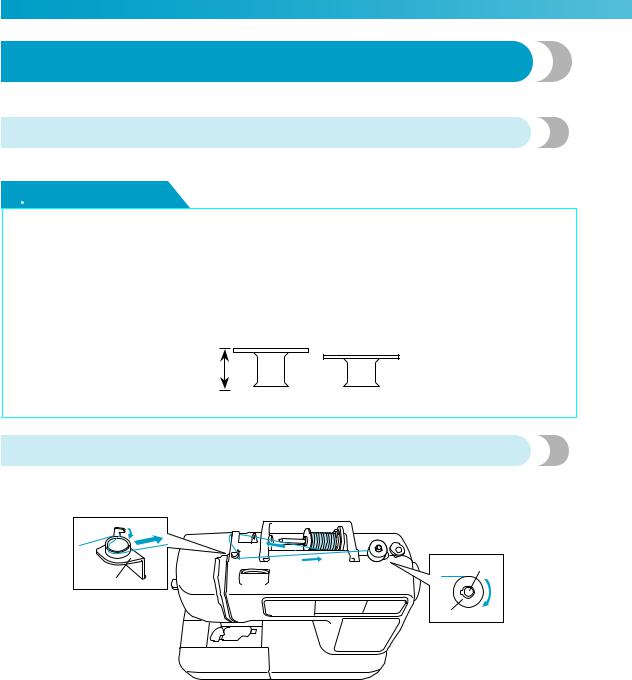
GETTING READY ————————————————————————————————————————————
Winding/Installing the Bobbin
This section describes how to wind the thread onto the bobbin, and then insert the bobbin thread.
Bobbin precautions
Be sure to observe the following precautions concerning the bobbin.
 CAUTION
CAUTION
●Only use the Bobbin (part code: SA156, SFB (XA5539-151)) designed specifically for this sewing machine. Use of any other bobbin may result in injuries or damage to the machine.
●The included bobbin was designed specifically for this sewing machine. If bobbins from other models are used, the machine will not operate correctly. Use only the included bobbin or bobbins of the same type (part code: SA156, SFB (XA5539-151)).
Actual size
11.5 mm (7/16 inch)
|
|
|
This model |
|
Other model |
Winding the bobbin
Wind the thread around the bobbin to prepare the bobbin thread.

 b a
b a
c
aBobbin-winding thread guide
bBobbin winder shaft
cBobbin
22
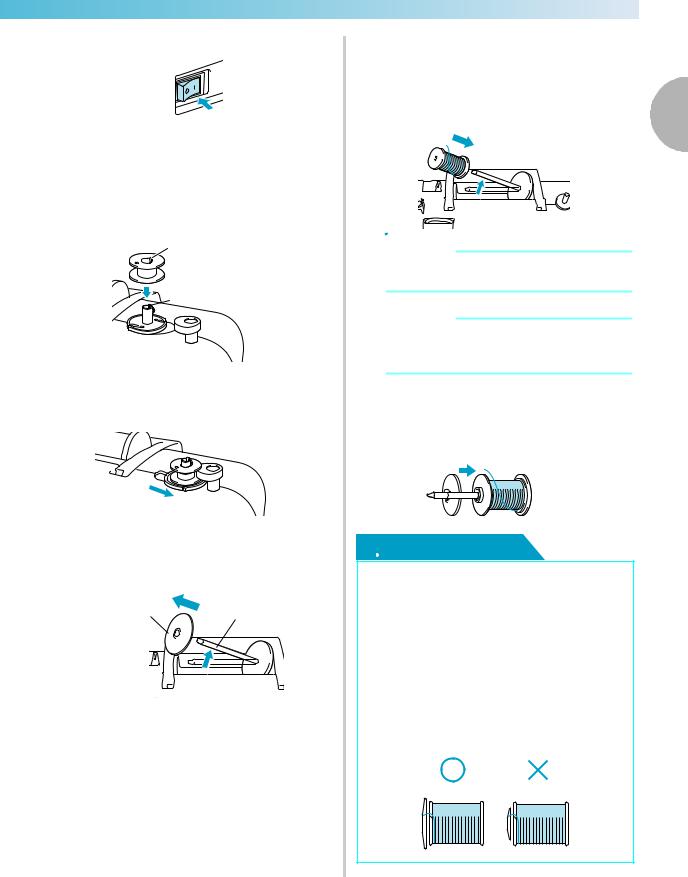
————————————————————————————————————————————————————
aTurn on the sewing machine.
bPlace the bobbin on the bobbin winder shaft so that the spring on the shaft fits into the notch in the bobbin.
Press down on the bobbin until it snaps into place.
a
b
aNotch
bBobbin winder shaft spring
cSlide the bobbin winder in the direction of the arrow until it snaps into place.
X  (Start/stop button) lights up in orange.
(Start/stop button) lights up in orange.
dPick up the spool pin and remove the spool cap that is inserted onto the spool pin.
a |
b |
aSpool cap
bSpool pin
ePlace the spool of thread for the bobbin onto the spool pin.
Slide the spool onto the pin so that the spool is horizontal and the thread unwinds to the front
at the bottom.
1
 Memo
Memo
zFor embroidering, use the embroidery bobbin thread.
 Note
Note
zIf the spool is not positioned so that the thread unwinds correctly, the thread may become tangled around the spool pin.
fSlide the spool cap onto the spool pin and return the spool pin to its original position.
Slide the spool cap as far as possible to the right as shown, with the rounded side on the left.
 CAUTION
CAUTION
●If the spool or the spool cap is not positioned correctly, the thread may become tangled around the spool pin or the machine may be damaged.
●Three spool cap sizes are available, allowing you to choose a spool cap that best fits the size of spool being used. If the spool cap is too small for the spool being used, the thread may catch on the slit in the spool or the machine may be damaged.
Winding/Installing the Bobbin 23
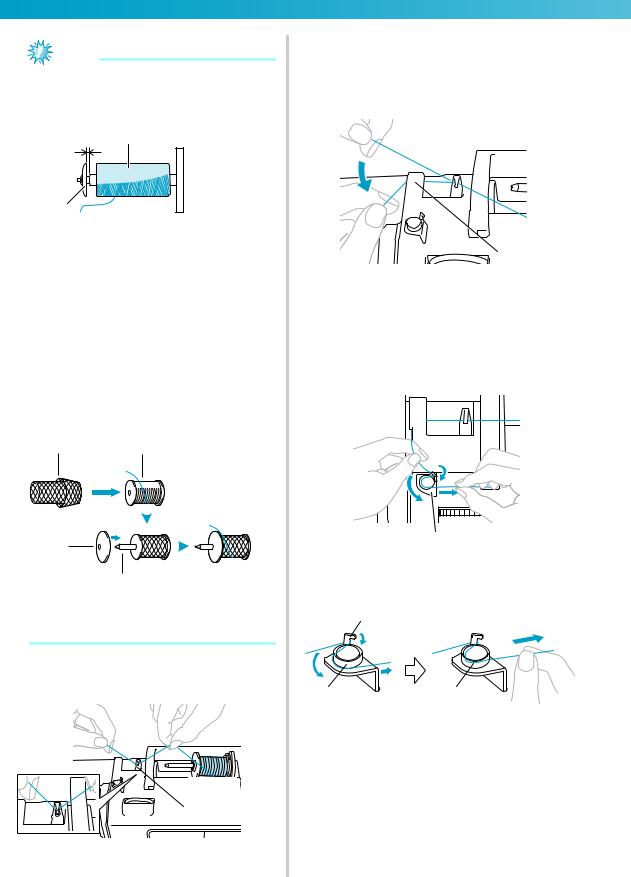
GETTING READY ————————————————————————————————————————————
Note
zWhen sewing with fine, cross-wound thread, use the small spool cap, and leave a small space between the cap and the spool.
c b
a
aSpool cap (small)
bSpool (cross-wound thread)
cSpace
zWhen using thread that winds off quickly, such as transparent nylon thread or metallic thread, place the spool net over the spool before placing the spool of thread onto the spool pin. If the spool net is too long, fold it to fit the size of the spool.
When the spool net is used, the upper thread tension may become tighter. Before sewing, refer to "Adjusting the thread tension" (page 59).
a b
c
d
aSpool net
bSpool
cSpool cap
dSpool pin
gPull the thread from the spool and pass the thread under the hook of thread guide.
hPass the thread behind the thread guide cover and to the front.
While holding the thread near the spool with your right hand, pull the thread with your left hand as shown below.
a
a Thread guide cover
iPull the thread to the right, pass it under the hook of the bobbin-winding thread guide, and then wind the thread counterclockwise under the pretension disc, pulling it in as far as possible.
a
a Bobbin-winding thread guide
Make sure that the thread passes under the pretension disk.
b
c |
d |
bHook
cPretension disk
dPull it in as far as possible.
a
a Thread guide
24
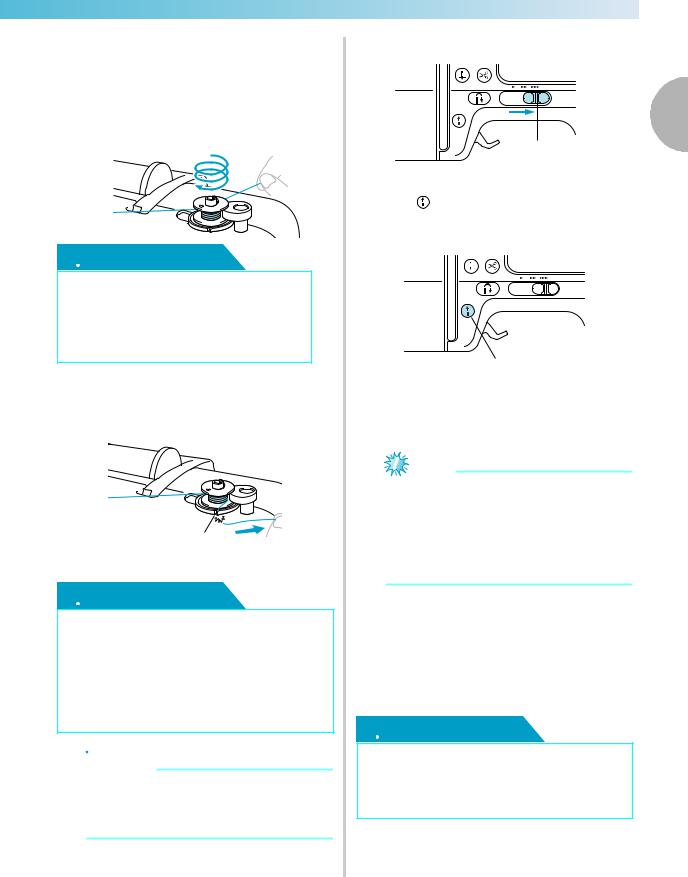
————————————————————————————————————————————————————
jWind the end of the thread clockwise around the bobbin five or six times.
While using your left hand to hold the thread that was passed through the bobbin-winding thread guide, use your right hand to wind the end of the thread.
Wind five or six times.
 CAUTION
CAUTION
●Be sure to pull the thread tightly and wind it clockwise. If the thread is wound counterclockwise, the thread may wind around the bobbin winder shaft.
kPass the end of the thread through the guide slit in the bobbin winder seat, and then pull the thread to the right to cut it.
a
aGuide slit in bobbin winder seat (with built-in cutter)
 CAUTION
CAUTION
●Be sure to cut the thread as described. If the bobbin is wound without cutting the thread using the cutter built into the slit in the bobbin winder seat, the thread may become tangled in the bobbin or the needle may bend or break when the bobbin thread starts to run out.
 Memo
Memo
zMake sure that the thread is correctly set before starting the bobbin winding. Otherwise the thread may become tangled and fail to wind the thread.
lSlide the sewing speed controller to the right.
1
|
a |
a Speed controller |
|
Press |
(Start/stop button) once. |
mWhen the foot controller is plugged in, press down on the foot controller.
a
a Start/stop button
XThe bobbin start winding and "Winding bobbin thread..." is displayed on the LCD screen.
Note
zDo not get away from the machine while winding the bobbin. Make sure that the bobbin thread is being winded correctly. If the bobbin thread is winded incorrectly,
press  (Start/stop button) or operate the foot controller immediately to stop the bobbin winding.
(Start/stop button) or operate the foot controller immediately to stop the bobbin winding.
nWhen the bobbin winding stops or becomes slow, press  (Start/stop button) once to stop the machine.
(Start/stop button) once to stop the machine.
When the foot controller is plugged in, remove your foot from the foot controller.
X The bobbin winding will stop.
 CAUTION
CAUTION
●When the bobbin winding stops or becomes slow, stop the machine. Otherwise, the sewing machine may be damaged.
Winding/Installing the Bobbin 25
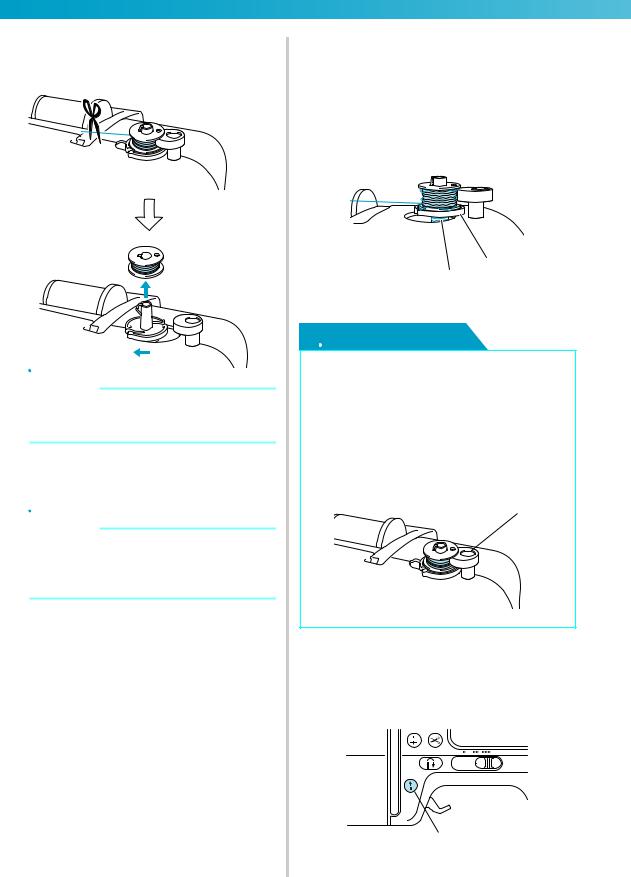
GETTING READY ————————————————————————————————————————————
oCut the thread with scissors, slide the bobbin winder shaft to the left, and then remove the bobbin from the shaft.
 Memo
Memo
zIf the bobbin winder shaft is set to the right side, the needle will not move. (Sewing is impossible.)
pSlide the sewing speed controller back to its original position.
 Memo
Memo
zWhen the sewing machine is started or the handwheel is turned after winding the bobbin, the machine will make a clicking sound; this is not a malfunction.
■When the thread became tangled under the bobbin winder seat.
If the bobbin winding starts when the thread is not passed under the pretension disk of the bobbinwinding thread guide correctly, the thread may become tangled under the bobbin winder seat.
In such a case, wind off the thread according to the following procedure.
b
a
aThread
bBobbin winder seat
 CAUTION
CAUTION
●Do not remove the bobbin winder seat even if the thread become tangled under the bobbin winder seat. It may result in injuries.
●Do not remove the screw of the bobbin winder presser, otherwise the machine may be damaged; you cannot wind off the thread by removing the screw.
a
a Screw of the bobbin winder presser
aIf the thread become tangled under the bobbin winder seat, press  (Start/stop button) once to stop the bobbin winding.
(Start/stop button) once to stop the bobbin winding.
When the foot controller is plugged in, remove your foot from the foot controller.
a
a Start/stop button
26
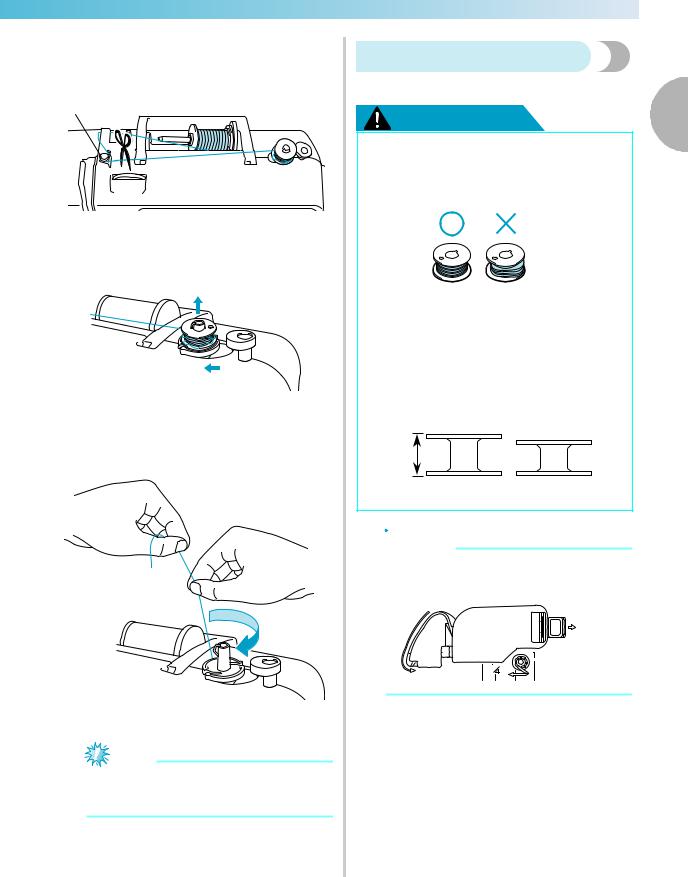
————————————————————————————————————————————————————
bCut the thread with scissors beside the bobbinwinding thread guide.
a
a Bobbin-winding thread guide
cSlide the bobbin winder shaft to the left, and then remove the bobbin from the shaft.
dHold the thread end with your left hand, and wind off the thread clockwise near the bobbin with your right hand as shown below.
eWind the bobbin again.
Note
zMake sure that the thread passes under the pretension disk of the bobbin-winding thread guide correctly (page 24).
Installing the bobbin
Install the bobbin wound with thread. |
|
CAUTION |
1 |
●Use a bobbin that has been correctly wound with thread, otherwise the needle may break or the thread tension will be incorrect.
●The included bobbin was designed specifically for this sewing machine. If bobbins from other models are used, the machine will not operate correctly. Use only the included bobbin or bobbins of the same type (part code: SA156, SFB (XA5539-151)).
Actual size
11.5 mm (7/16 inch)
This model |
Other model |
 Memo
Memo
zThe order that the bobbin thread should be passed through the bobbin case is indicated by marks that surround the bobbin case.
Winding/Installing the Bobbin 27
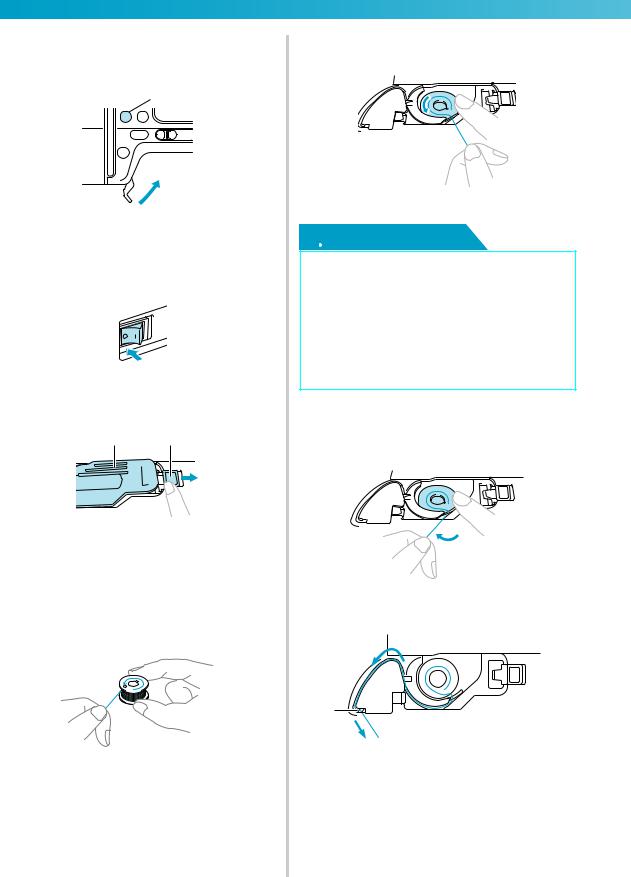
GETTING READY ————————————————————————————————————————————
aPress  (Needle position button) once or twice to raise the needle, and then raise the presser foot lever.
(Needle position button) once or twice to raise the needle, and then raise the presser foot lever.
a
 b
b
aNeedle position button
bPresser foot lever
bTurn off the sewing machine.
cSlide the bobbin cover latch to the right.
a b
aBobbin cover
bLatch
X The bobbin cover opens.
dRemove the bobbin cover.
eHold the bobbin with your right hand and hold the end of the thread with your left hand.
• Be careful not to drop the bobbin.
fInsert the bobbin into the bobbin case with your right hand.
• Be sure to insert the bobbin correctly.
 CAUTION
CAUTION
●Be sure to insert the bobbin and depress it to the bottom with your finger. Otherwise, the thread may break or the thread tension will be incorrect.
●Be sure to thread the machine as indicated. Otherwise, the thread may break or the thread tension will be incorrect.
gLightly hold down the bobbin with your right hand, and then guide the thread as shown with your left hand.
hPass the thread through the slot as shown, and then pull the thread out toward the front.
a
a Cutter
X The cutter cuts the thread.
28
